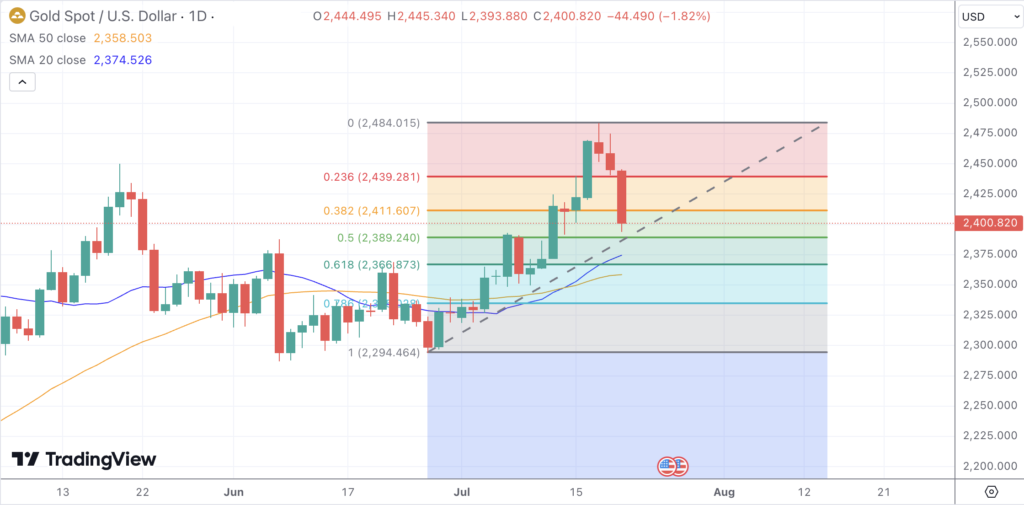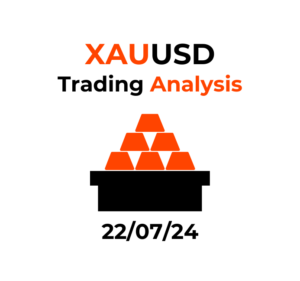Key Takeaways
- Gold prices have experienced significant volatility, with a sharp pullback following a record high.
- Key technical support levels include the 50% Fibonacci retracement at $2,389 and the 61.8% retracement at $2,366.
- Market expectations of a Federal Reserve rate cut in September have fueled recent bullish momentum for gold.
- Geopolitical tensions and China’s economic slowdown continue to support gold’s safe-haven appeal.
- Upcoming US economic data and Fed signals will be crucial in determining gold’s direction. Traders should remain vigilant to potential volatility and shifts in market sentiment.
Market Dynamics and Recent Performance

Gold prices have recently faced significant volatility, driven by a combination of economic data, geopolitical tensions, and market reactions to Federal Reserve signals. After reaching a record high of $2,483.74, gold experienced a sharp pullback due to profit-taking and a strengthening US dollar. This sell-off was intensified by rising US Treasury yields, which increased the opportunity cost of holding non-yielding assets like gold. Additionally, recent economic data has painted a mixed picture, with resilient retail sales contrasted by a slight increase in unemployment benefit applications.
Technical and Fundamental Influences
From a technical perspective, gold is testing key support levels after failing to sustain its breakout above the all-time high. The 50% Fibonacci retracement level at $2,389 is a crucial support point. Should this level fail to hold, the next significant support zone is around the 61.8% Fibonacci retracement at $2,366, which coincides with the 20-day and 50-day moving averages. The bearish momentum is further supported by a shooting star candlestick pattern on the weekly chart, indicating potential for continued downward pressure.

Fundamentally, gold’s recent rise was fueled by expectations of a Federal Reserve rate cut in September. Fed Chair Jerome Powell’s comments and signals from other Fed officials have heightened market expectations for monetary easing, which typically benefits gold. However, geopolitical factors also play a significant role. China’s economic slowdown and ongoing geopolitical tensions in Europe and the Middle East have increased gold’s appeal as a safe-haven asset. Institutional investors have shown renewed interest, as evidenced by inflows into global gold ETFs, despite sluggish physical demand in Asia.
Looking Forward
The upcoming week will be critical for gold as markets await further economic data and potential signals from the Federal Reserve. Traders will closely monitor key US economic reports, including the Producer Price Index (PPI) and retail sales figures. These data points will provide insights into the inflation outlook and economic health, influencing market expectations for Fed policy. Additionally, geopolitical developments, particularly in Europe and the Middle East, will continue to impact gold prices.

